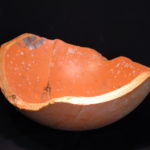Pacific Northwest Sculptors member Andy Kennedy’s thoughts on unique materials and tools in installation art.
tools
Sculpture Tools: Favorite tools for creating figurative ceramic sculpture
Andy Kennedy Some rocks, a fork, a piece of wire, a wooden baseball bat. This is a short list of Favorite Tools for creating figurative ceramic sculpture. The rocks are chunks of concrete and asphalt that fit my hands. They are rough here and sharp there. I have memorized their shapes to intuit the best […]
